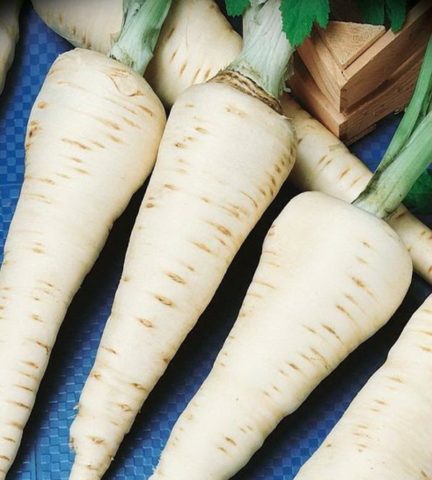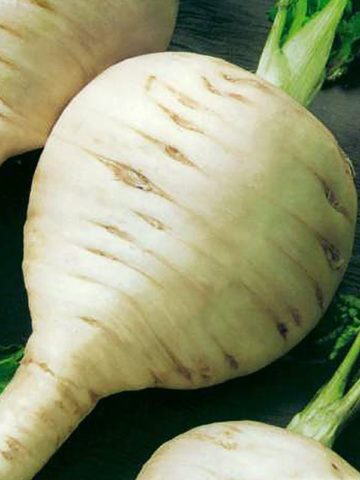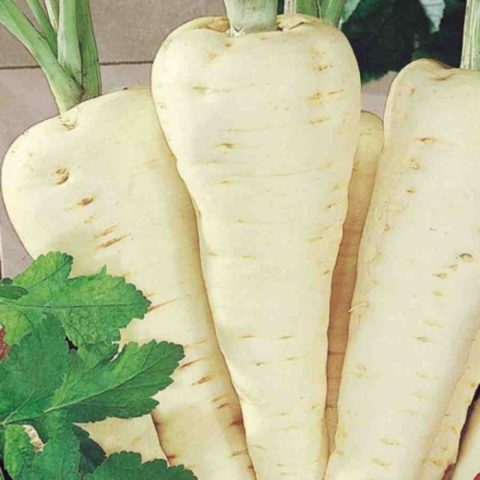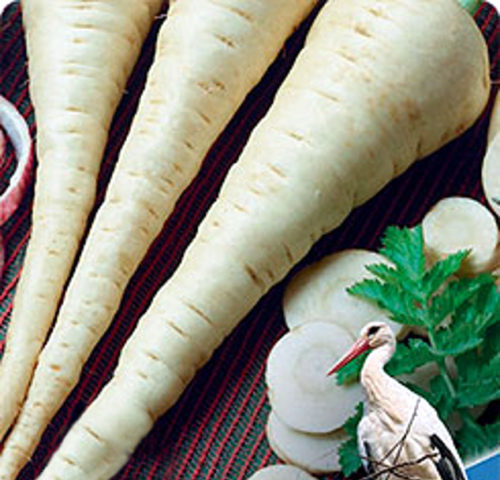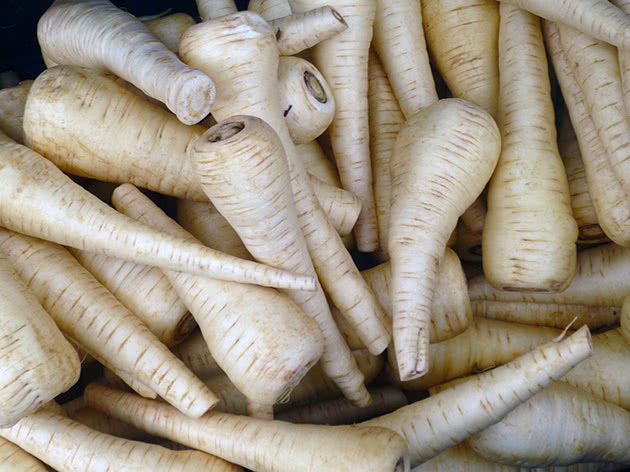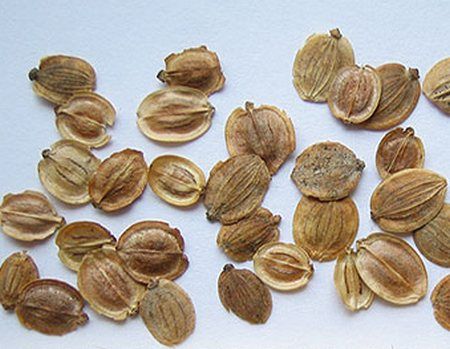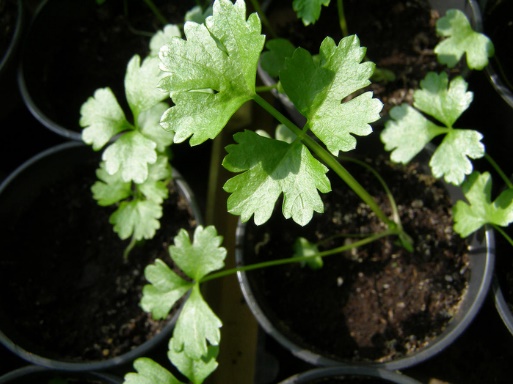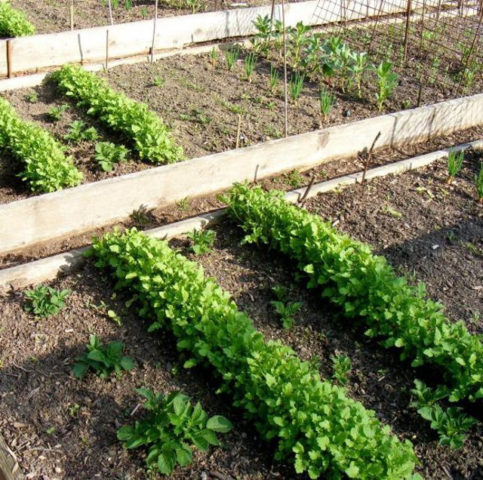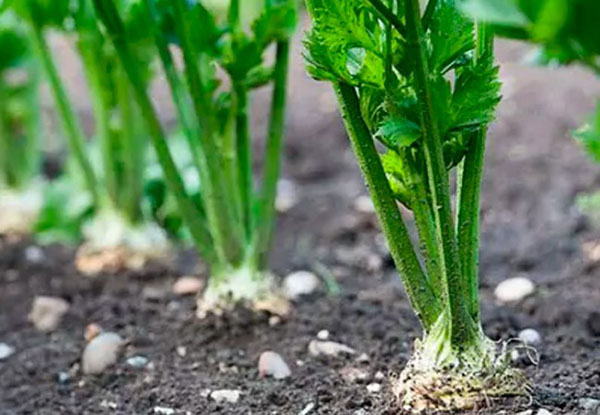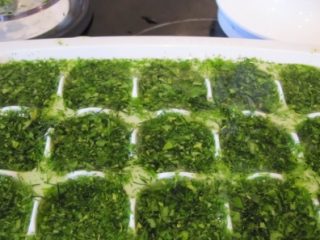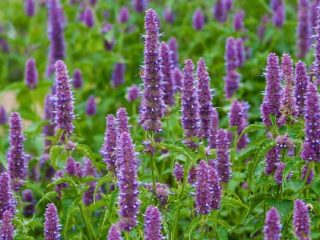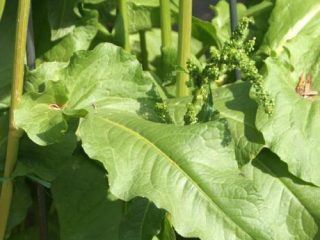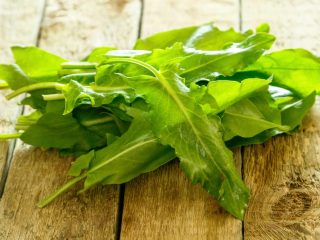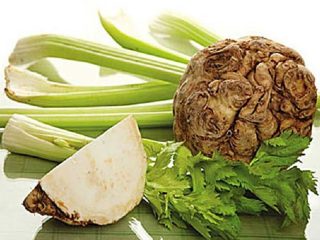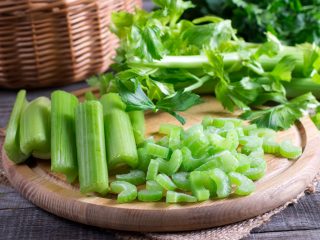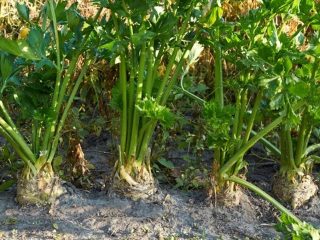Content
Planting parsnips and growing vegetables on your plot is not difficult. Parsnips belong to the Apiaceae family and are closely related to carrots and celery. It has a root vegetable similar to them. The spicy vegetable grows in a biennial or perennial crop. The cold-resistant and unpretentious root vegetable has a sweetish taste with some bitterness, reminiscent of the taste of celery. Young parsnip leaves are also edible.
Popular varieties of parsnips
Selection work on the emergence of new varieties of parsnip is practically not carried out, so there are few varieties of the crop.Varieties are selected for cultivation depending on the quality of the soil on the site. On clay soils it is most favorable to grow rounded root crops.
- Petrik – mid-season, productive variety. The shape of the root crop is conical. The pulp is dense, juicy, gray-white in color and fragrant. Weight – 150-200 g, diameter – 4-8 cm, length – 20-35 cm. The surface is smooth, the peel is white. Planting: April-May. The period from germination to ripening is 84-130 days. The variety is valued for its medicinal and dietary qualities, and the plant’s resistance to diseases.
- Round – one of the fastest ripening varieties, the growing season is from 60 to 110 days. The shape is round and flattened, sharply tapering downwards, diameter - 6-10 cm, length - 8-15 cm. Weight - 100-163 g. Peel color - grayish-white. The core is grayish-white with the presence of a light yellow rim. The aroma is pungent. Planting: April-March, harvesting - October. The variety's root crops are easily removed from the soil.
- Culinary – mid-early variety. The surface is uneven and white. The shape is cone-shaped, the core is gray-white with a light yellow rim. The pulp is coarse, low-juicy, white. The aroma is pungent. Planting - in April-May. The growing season is 80-85 days. When grown, the root crop does not protrude from the surface of the soil. Ideal for preservation. Both the root and leaves are used as a medicinal plant.
- White stork – mid-season variety. The surface is smooth, white. The shape is cone-shaped, weight – 90-110 g. The pulp is white, juicy. It is distinguished by high productivity, aligned root crops. The taste is good. Excellent keeping quality. The aroma is strong. Increased content of vitamins. The growing season is 117 days. Planting – April, May. Cleaning – August-September.
The best of them all mid-early variety.From germination to ripening - 90-100 days, in the Southern regions - 60-80 days. The shape of the root crop is cone-shaped, shortened. The surface is smooth, white. The pulp is white, juicy. When grown, it is completely submerged in the soil, but is easily removed. Weight – 100-140 g. The aroma is good, the taste is excellent. Root crops grow aligned and are stored well. Contains a high amount of vitamins. Planting - end of April, storage - beginning of May.
The vegetable is frost-resistant, therefore suitable for growing in various regions, regardless of climate. When grown in the Northern regions, the long growing season of the crop is taken into account. In these regions, it is most favorable to grow parsnips through seedlings.
Parsnips have low nutritional but high vitamin value. Also suitable for animal and bird feed. But wild parsnips are poisonous.
Features of cultivation
Parsnip is a herbaceous plant that forms a powerful root that goes deep into the soil. The rosette of leaves is well developed. In the first year it forms a root crop, in the second it produces flowering shoots and produces seeds. Root crops of the second year are not used for food.
Seedlings tolerate frosts down to -5°C, adult plants - up to -8°C. Therefore, it is suitable for early as well as winter planting. Parsnips are one of the last to be harvested, and their tops remain green for a long time.
Considering the characteristics of the root crop, its cultivation requires loose, fertile soils with a deep arable layer. In heavy, clayey soils, root crops take on an uneven shape. Acidified soils are also not suitable for growing parsnips.It is best to grow the crop on light loam and sandy loam soils.
The culture is moisture-loving, but does not tolerate waterlogging, including from close groundwater. Parsnips are light-loving, especially in the first period of cultivation. Therefore, the planting area should be well lit. Even some shading reduces yield by 30-40%.
Predecessors can be any crops, but it is best to grow them after pumpkins, potatoes and onions.
Growing parsnips from seeds through seedlings
Parsnips reproduce by seeds. From the photos and videos on how to properly grow parsnips from seeds, you can see that the seeds of the crop are light, large and flat. They are purchased on sale or prepared from their own collection.
The royal root crop is stored in the winter, in a cool room. The next season it is planted in the soil, the plant forms a peduncle and the seeds ripen in the fall.
Parsnips are grown from last year's planting material. Seeds with a longer shelf life have a greatly reduced germination rate.
The seeds of the spicy culture are difficult to germinate due to the high content of essential oils on their shell. Therefore, they need to be prepared in advance for sowing.
Pre-sowing seed preparation:
- Soaking. The seeds of the spicy plant are covered with an ethereal shell, through which it is difficult for moisture to pass through and for the sprout to break through. Therefore, to speed up the germination process, essential oils from the surface of the seeds must be washed off. To do this, they are placed in warm water for a day. During this time, the water is changed to fresh several times.
- Checking the quality of seeds. In order to determine the viability of seeds, they are laid out in a damp cloth and covered with a plastic bag. After a few days, wash it. Inspect and determine the condition of the seeds. Viable ones will swell slightly. Poor quality seeds at this stage of preparation become moldy and have an unpleasant odor.
- Hardening. Swollen but not sprouted seeds are stored for about a week in a damp cloth in the refrigerator. Place them on the top shelf, which is closest to the freezer. Make sure that the environment in which the seeds are kept remains moist. Alternate 16-18 hours in the refrigerator with transfer to room temperature for 6-8 hours.
Also, for better germination, seeds are sprayed with growth stimulants. Seeds prepared before planting germinate on the soil 2 times faster than dry ones.
When to sow parsnips for seedlings
They begin to grow parsnips for seedlings a month before planting in open ground. Depending on the growing region, the sowing date is counted from the date when the soil warms up. Also, frost-free weather should prevail at the time of planting.
Preparing containers and soil
Young seedlings are susceptible to a fungal disease - blackleg. Fungal spores can be found in the soil and on the surfaces of previously used planting containers. Therefore, before planting, containers and soil must be disinfected. To do this, use fungicide solutions or pour boiling water over the planting materials.
The soil for planting parsnips is prepared loosely; for this purpose, the soil is sifted through a sieve and perlite is added to the composition. It is best to plant the seeds immediately in separate containers or peat tablets, so that when planting in open ground there is less damage to the root system.
How to plant parsnip seeds correctly
Before planting, the soil is lightly compacted so that it is 1 cm below the edge of the container and spilled with water. The seeds are laid out several at a time and sprinkled with soil on top. The containers are covered with film to create the necessary microclimate.
When growing parsnips in peat tablets, before sprouts appear, they are placed in a mini-greenhouse - a container with a lid. Crops are periodically ventilated. It will take several weeks for seedlings to emerge.
Features of growing parsnip seedlings
Caring for parsnip seedlings is simple. When seedlings appear, the containers are moved to a well-lit place, but not in direct sunlight.
During prolonged and cloudy weather, the seedlings are given additional light so that they do not stretch out excessively. Total lighting time – 14 hours.
Water the sprouts sparingly without causing stagnation of moisture. At the seedling stage, seedlings develop very slowly. Young vegetable shoots resemble parsley or celery leaves, but are larger.
When and how to dive
It is not recommended to pick plants because even a slight disturbance of the root system causes young shoots to stop developing. Therefore, when growing vegetable seedlings, the seedlings are thinned out, leaving the strongest seedling. When thinning, do not pull out, but carefully trim unnecessary shoots at soil level. To do this, use a sharp, disinfected instrument.
When can you transplant to garden beds?
Parsnip seedlings are transferred to the beds at the age of one month. A week before, the seedlings are hardened off, gradually increasing their exposure to fresh air. Plants are planted in mid-March, maintaining a distance, so as not to thin out in the future.
Parsnips do not tolerate transplantation well, so when planting them in open ground, they try not to damage the root system. When growing seedlings in peat cups or tablets, they are transferred to the ground without removing the shell.
How to plant parsnip seeds in open ground
The bed for growing parsnips has been prepared since the previous season. Manure and lime are applied 1-2 years before cultivation. Fresh organic matter causes increased formation of tops to the detriment of the proper formation of the root crop. Peat and coarse sand are added to heavy soils.
Parsnip seeds germinate at a temperature of +2°C. The seedlings are resistant to frost. But the optimal temperature for the development of seedlings is +16... +20°C.
When to sow parsnips in open ground
The vegetable crop has a long growing season, so growing parsnips in open ground from seeds begins in early spring after the soil has thawed or is sown before winter. Parsnips are planted in the spring without seedlings in April - early May.
Planting before winter has its own characteristics. If you sow seeds too early, then when the thaw returns, they will begin to grow and there will be no harvest next season. Therefore, winter sowing is carried out on frozen soil. To do this, the holes on the ridge are prepared in advance, and the soil for filling is stored indoors at above-zero temperatures.
Dry seeds are used for sowing in autumn. The seeds are placed in the hole thicker than during spring sowing. Shoots appear in early spring, and crop yields are higher with such planting. The harvest ripens 2 weeks earlier than with spring sowing.
Selecting a location and preparing beds
In autumn, the ridge is cleared of plant remains of the previous crop.If there is a shallow arable layer on the site, the ridge is raised. To do this, install sides so that the soil does not crumble and add the required amount of soil.
When grown, the spicy plant removes a lot of potassium from the soil. Therefore, during autumn digging, add 1 tbsp. l. superphosphate per 1 sq. m and potash fertilizers. The bed is covered for the winter with cut green manure or other mulch.
In the spring, before planting, the soil is loosened to a depth of 10 cm, large lumps are broken up, and the surface is carefully leveled. During spring preparation, ash is added to the bed.
How to plant parsnip seeds directly in open ground
When grown, parsnips form a large volume of leaf mass. Therefore, when planting parsnips in open ground, a more sparse scheme is used than for other root crops. The width between the rows is 30-35 cm. For sowing, holes are marked with a depth of 2-2.5 cm, using a one-line or two-line pattern. Due to the uneven germination of seeds, parsnips are sowed in open ground densely. After sowing, the soil is pressed to ensure better contact of the seeds with the soil.
During the long period of germination of parsnip seeds, the ridge becomes overgrown with weeds and it becomes difficult to determine the sowing sites for care. To do this, beacon crops are planted nearby. These are fast-growing plants: lettuce, mustard greens or radishes.
Early-emerging crops mark seeding rows, allowing the soil to be loosened and weeds removed without damaging the seedlings.
After sowing, the bed is covered with film before the shoots appear. Parsnips, in addition to long germination, also develop slowly during the first period of growth.Therefore, unlike carrots, it is not used as a bunch product, when the first harvest of a vegetable that has not yet fully ripened is eaten.
Typically, parsnips are grown in combination with carrots and other crops. They are also sown along paths or berry fields. Usually plantings take up little space, so growing parsnips in the country is not difficult.
Thinning
Thinning is a mandatory technique when growing parsnip vegetables. The root crop grows large, so it needs sufficient space. Unthinned plants produce small root crops.
The first thinning is carried out when 2-3 true leaves appear, leaving gaps between plants of 5-6 cm. The second time, the crops are thinned when 5-6 leaves appear, at which time 12-15 cm are left between plants.
How to grow parsnips in open ground
When the plant is grown properly, parsnip turns out juicy and fleshy, has a pleasant taste and aroma. Rounded forms grow about 10 cm in diameter, cone-shaped ones reach 30 cm in length.
When planting and caring for parsnips in open ground, do not allow the soil to dry out. During the growing season, plants are watered 5-6 times, adjusting watering depending on the weather. For 1 sq. m of planting use 10-15 liters of water. The plant especially needs watering in mid-summer. After moistening, the soil is loosened, slightly hilling up the root crops.
A month after germination, in order to provide nutrition to a large plant with a large volume of vegetative mass, fertilizers are applied. It is effective to use a solution of mullein in a ratio of 1:10 or an infusion of bird droppings in a ratio of 1:15.
During the period of increasing leaf mass, it becomes easier to grow the parsnip vegetable. The leaves cover the soil, keeping it moist and inhibiting the growth of weeds.
When growing and caring for parsnips in open ground, care must be taken. The essential oils contained in the leaves cause skin burns similar to nettles. Leaves cause especially strong skin irritation in humid or hot weather. Therefore, when working on loosening or thinning, exposed areas of the body are protected. Work is carried out in cloudy weather.
Harvest and storage
When grown in suitable soil, root crops of the same variety grow aligned, without bending or damage. Such copies are used for storage.
The peculiarity of parsnips is that the root crops do not need to be dug up, but rather left in the soil for the winter. So, they are well preserved until spring and remain edible. But to prevent the taste from deteriorating, they must be dug up in the spring before the vegetative mass begins to grow. Vegetables left in the ground, especially in harsh winters, are additionally covered with spruce branches and snow.
When to dig parsnips
Parsnips are removed from the ridge as one of the last among vegetable crops or together with carrots, but before frost occurs on the soil. Vegetables of some varieties with an elongated shape are difficult to remove, so they are dug up with a pitchfork. When digging, try not to damage the root crops, otherwise they will not be stored well. The tops are cut off, leaving a short stump. The remaining soil is carefully cleaned off. Vegetables are dried.
How to store root parsnips in winter
The vegetable crop is well stored in cool rooms at a temperature of about 0°C and a humidity of 90-95%. Vegetables are placed in boxes and sprinkled with moderately damp sand.Parsnips are also stored on racks. Parsnips are stored both as a whole and in processed form. The root vegetable can be frozen and dried.
Conclusion
Parsnips can be planted in early spring or autumn. The culture is undemanding to growing conditions and is cold-resistant. The vegetable is rich in nutrients and has a balanced mineral composition. It is used as a flavorful additive in main courses and soups. Keeps well fresh and processed.
